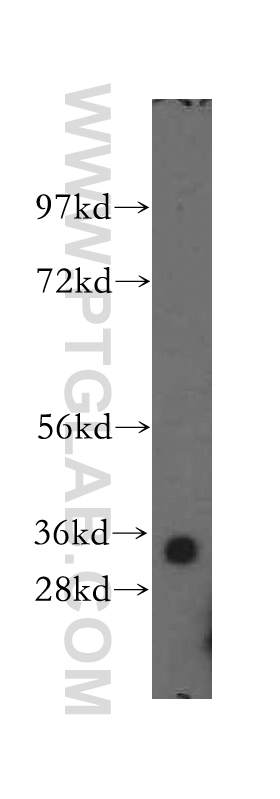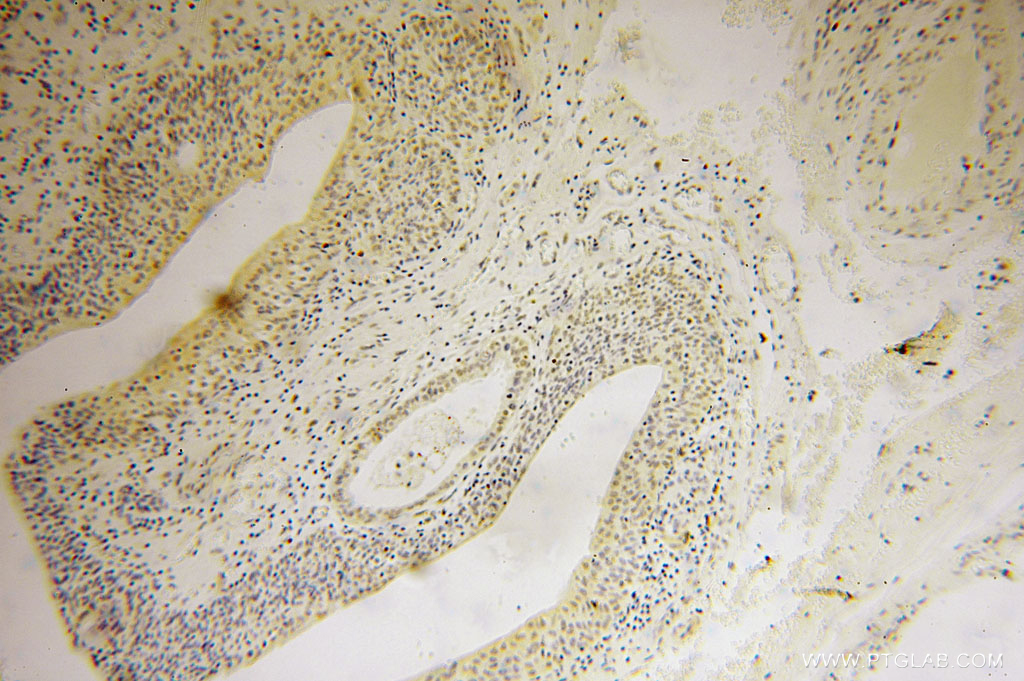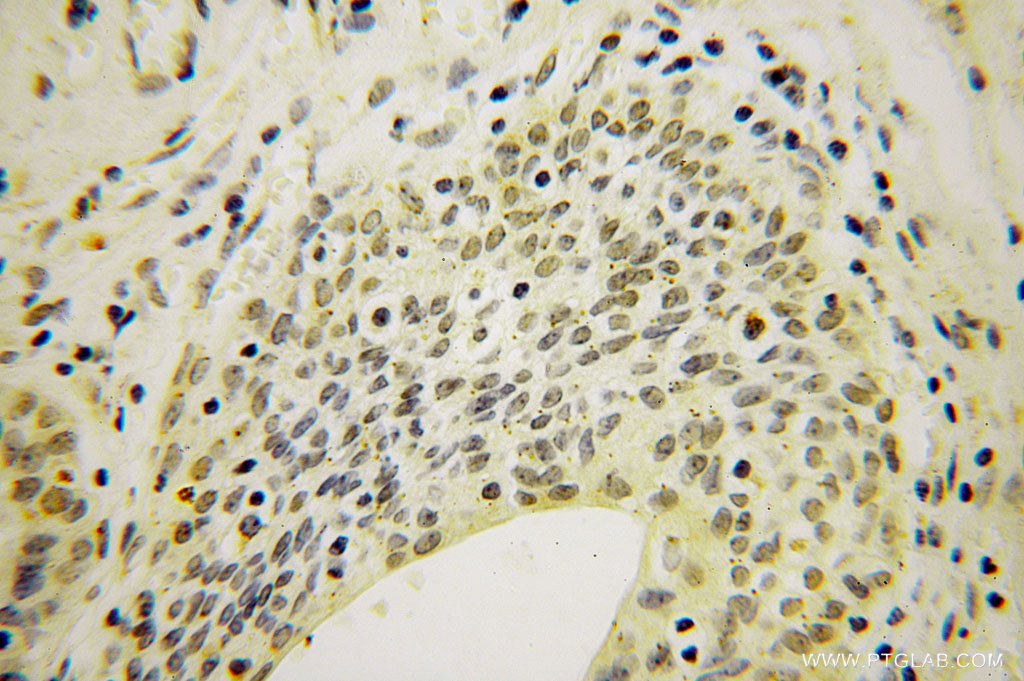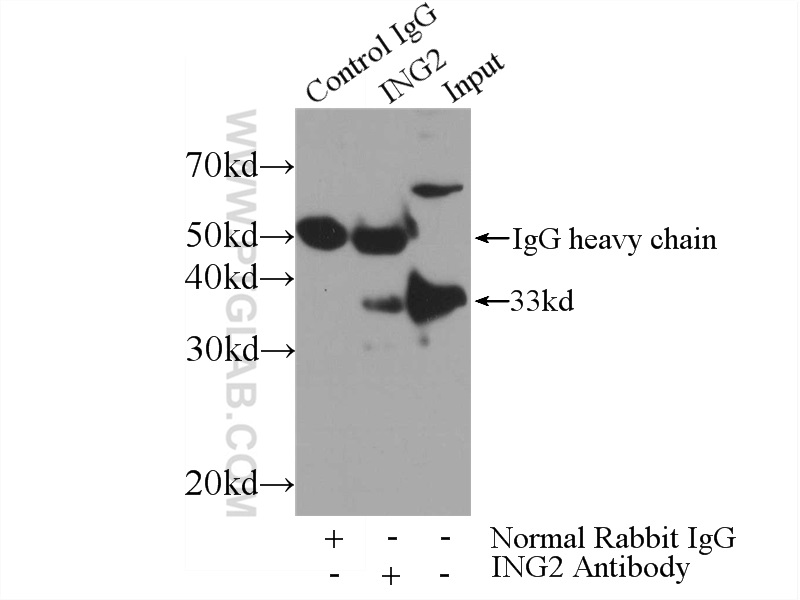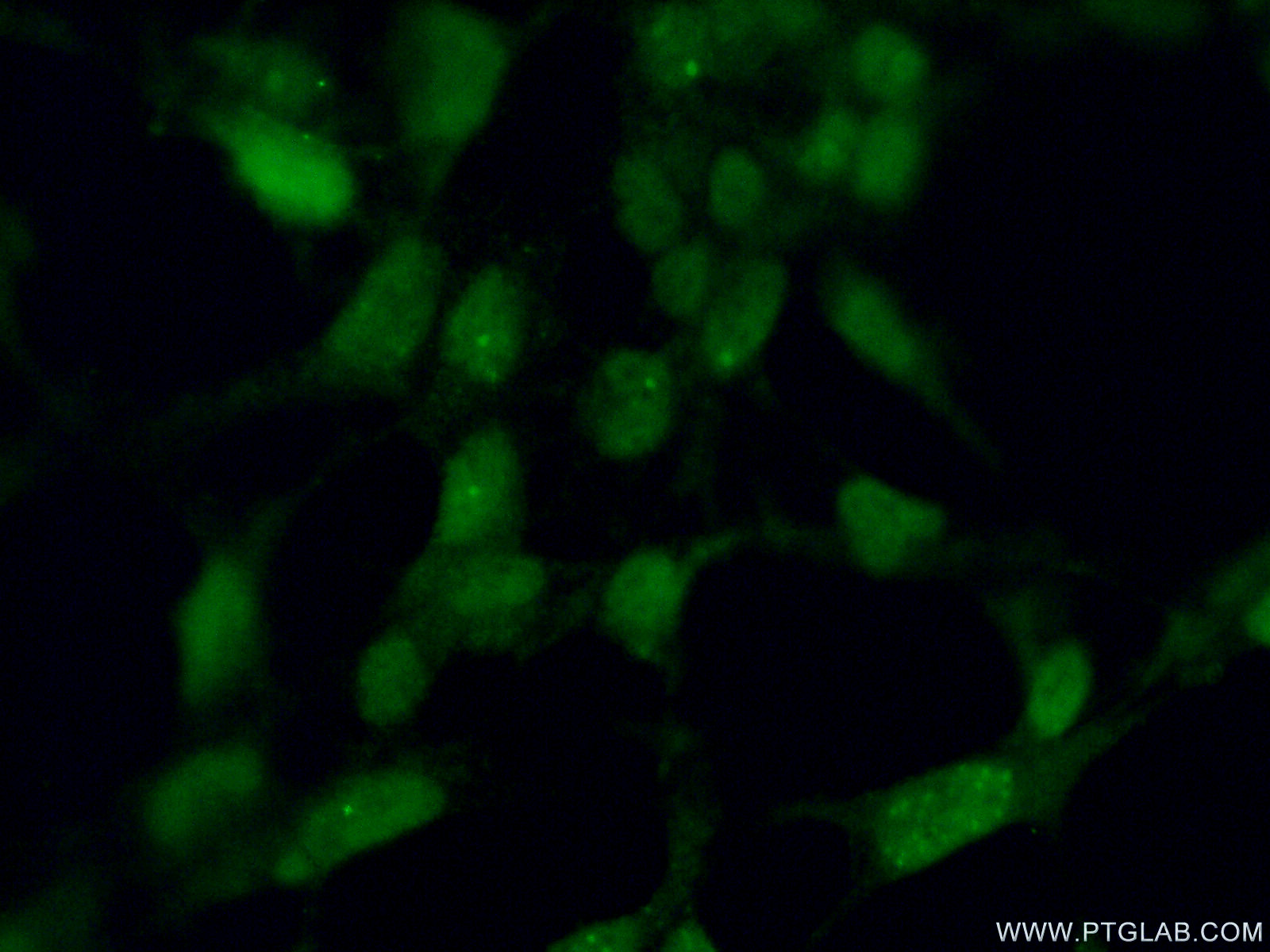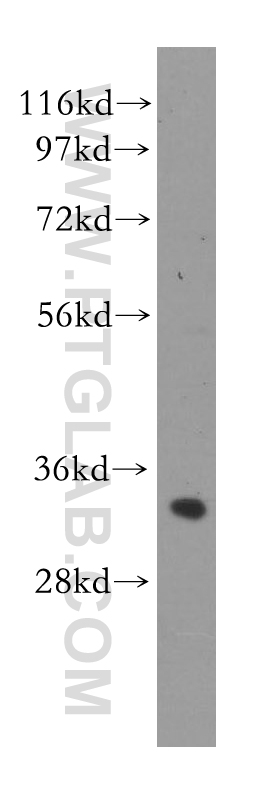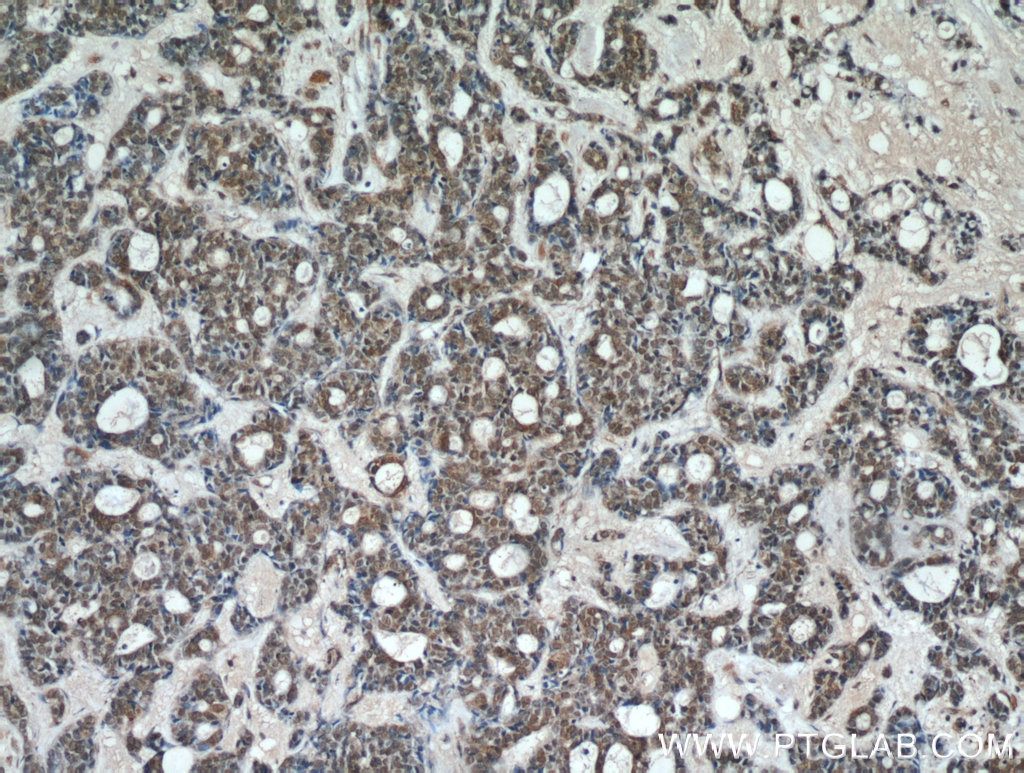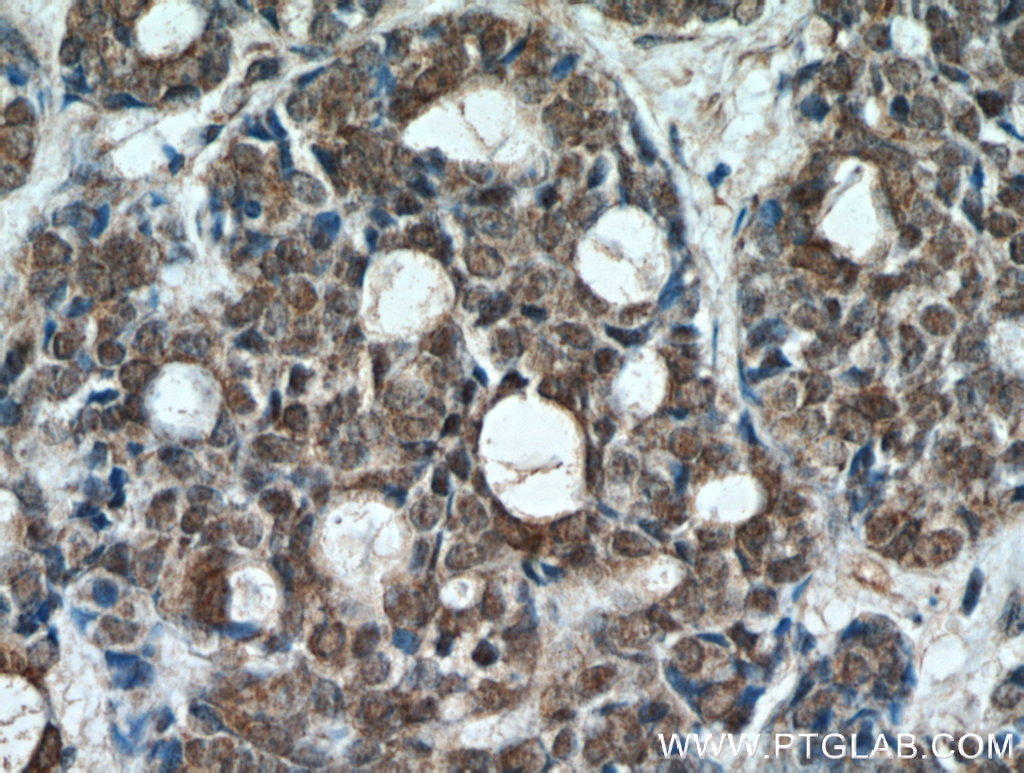- Featured Product
- KD/KO Validated
ING2 Polyclonal antibody
ING2 Polyclonal Antibody for IF/ICC, IHC, IP, WB, ELISA
Host / Isotype
Rabbit / IgG
Reactivity
human, mouse, rat
Applications
IF/ICC, IHC, IP, WB, ELISA
Conjugate
Unconjugated
验证数据展示
经过测试的应用
| Positive WB detected in | HEK-293 cells, human liver tissue |
| Positive IP detected in | HEK-293 cells |
| Positive IHC detected in | human colon cancer tissue, human cervical cancer tissue Note: suggested antigen retrieval with TE buffer pH 9.0; (*) Alternatively, antigen retrieval may be performed with citrate buffer pH 6.0 |
| Positive IF detected in | HEK-293 cells |
推荐稀释比
| Application | Dilution |
|---|---|
| Western Blot (WB) | WB : 1:500-1:1000 |
| Immunoprecipitation (IP) | IP : 0.5-4.0 ug for 1.0-3.0 mg of total protein lysate |
| Immunohistochemistry (IHC) | IHC : 1:20-1:200 |
| Immunofluorescence (IF) | IF : 1:50-1:500 |
| It is recommended that this reagent should be titrated in each testing system to obtain optimal results. | |
| Sample-dependent, Check data in validation data gallery. | |
产品信息
11560-1-AP targets ING2 in WB, IP, IHC, IF, ELISA applications and shows reactivity with human, mouse, rat samples.
| Tested Applications | IF/ICC, IHC, IP, WB, ELISA |
| Cited Applications | IF, IHC, IP, WB |
| Tested Reactivity | human, mouse, rat |
| Cited Reactivity | human, mouse |
| Immunogen | ING2 fusion protein Ag2121 种属同源性预测 |
| Host / Isotype | Rabbit / IgG |
| Class | Polyclonal |
| Type | Antibody |
| Full Name | inhibitor of growth family, member 2 |
| Synonyms | ING1L, ING1Lp, ING2, Inhibitor of growth protein 2, p32, p33ING2 |
| Calculated Molecular Weight | 280 aa, 33 kDa |
| Observed Molecular Weight | 33 kDa |
| GenBank Accession Number | BC030128 |
| Gene Symbol | ING2 |
| Gene ID (NCBI) | 3622 |
| RRID | AB_2127771 |
| Conjugate | Unconjugated |
| Form | Liquid |
| Purification Method | Antigen affinity purification |
| UNIPROT ID | Q9H160 |
| Storage Buffer | PBS with 0.02% sodium azide and 50% glycerol pH 7.3. |
| Storage Conditions | Store at -20°C. Stable for one year after shipment. Aliquoting is unnecessary for -20oC storage. |
背景介绍
实验方案
| Product Specific Protocols | |
|---|---|
| WB protocol for ING2 antibody 11560-1-AP | Download protocol |
| IHC protocol for ING2 antibody 11560-1-AP | Download protocol |
| IF protocol for ING2 antibody 11560-1-AP | Download protocol |
| IP protocol for ING2 antibody 11560-1-AP | Download protocol |
| Standard Protocols | |
|---|---|
| Click here to view our Standard Protocols |
发表文章
| Species | Application | Title |
|---|---|---|
Mol Cell Proteomics Human family with sequence similarity 60 member A (FAM60A) protein: a new subunit of the Sin3 deacetylase complex. | ||
Chem Biol Deacetylase inhibitors dissociate the histone-targeting ING2 subunit from the Sin3 complex.
| ||
Cancers (Basel) Antithetic hTERT Regulation by Androgens in Prostate Cancer Cells: hTERT Inhibition Is Mediated by the ING1 and ING2 Tumor Suppressors.
| ||
Front Cell Dev Biol ING2 Controls Mitochondrial Respiration via Modulating MRPL12 Ubiquitination in Renal Tubular Epithelial Cells.
| ||
Cancer Lett Decreased expression of ING2 gene and its clinicopathological significance in hepatocellular carcinoma. | ||
Biochem J Histone H3 N-terminal mimicry drives a novel network of methyl-effector interactions. |
